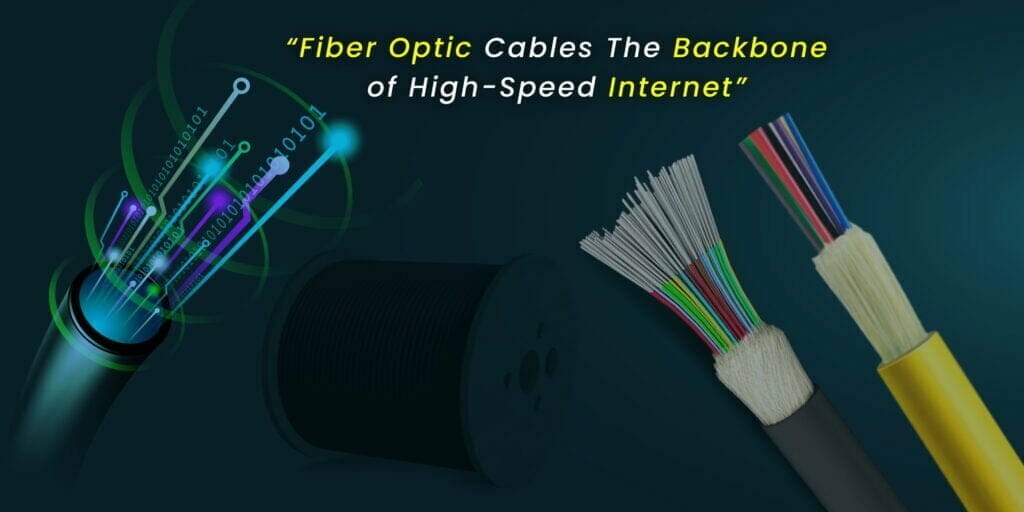
Fiber optic cables have revolutionized the way we access high-speed internet. Unlike traditional copper cables, fiber optic cables transmit data using light, which enables faster speeds and greater bandwidth. In this article, we will explore how fiber optic cables work and why they are the backbone of high-speed internet.
How Fiber Optic Cables Work
Fiber optic cables consist of thin strands of glass or plastic that transmit data using light. The light is generated by a laser or LED and travels down the fiber optic cable through a process called total internal reflection. The cable’s outer layer, called the cladding, has a lower refractive index than the inner core, which causes the light to reflect off the walls of the core and travel down the cable.
Benefits of Fiber Optic Cables
Compared to conventional copper cables, fiber optic cables provide numerous advantages. The most significant benefit is speed. Fiber optic cables can transmit data at speeds up to 100 Gbps, which is much faster than copper cables. Fiber optic cables also have greater bandwidth, which means they can handle more data at once without slowing down.
Applications of Fiber Optic Cables
Fiber optic cables are used in a variety of applications, including telecommunications, cable television, and internet service providers. Telecommunications companies use fiber optic cables to connect cities and countries, while cable television providers use them to deliver high-quality video and audio signals to customers. Internet service providers use fiber optic cables to deliver high-speed internet to homes and businesses.
Installation of Fiber Optic Cables
Expertise and specialized equipment are necessary for the installation of fiber optic cables. The cables must be carefully installed to ensure that they are not damaged during the process. In some cases, existing infrastructure, such as utility poles or underground conduits, can be used to install the cables. In other cases, new infrastructure may need to be built to accommodate the cables.
Future of Fiber Optic Cables
As technology continues to advance, the demand for high-speed internet will only increase. Fiber optic cables will play a critical role in meeting this demand. The future of fiber optic cables looks bright, with new technologies being developed to increase their speed and bandwidth. For example, researchers are working on developing hollow core fiber optic cables that could transmit data at speeds up to 73 terabits per second.
Conclusion
The high-speed internet heavily relies on fiber optic cables as they form the crucial infrastructure. They offer faster speeds, greater bandwidth, and are used in a variety of applications. While installing fiber optic cables requires specialized equipment and expertise, the future of fiber optic cables looks promising, with new technologies being developed to increase their speed and capacity. As we continue to rely more and more on high-speed internet, fiber optic cables will play an increasingly important role in our daily lives.




